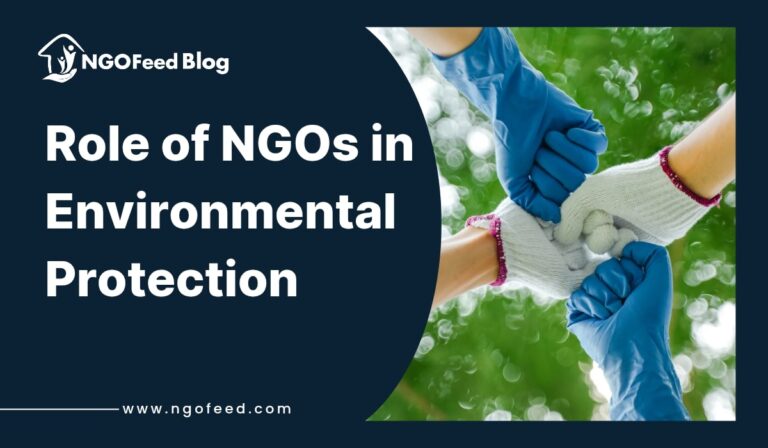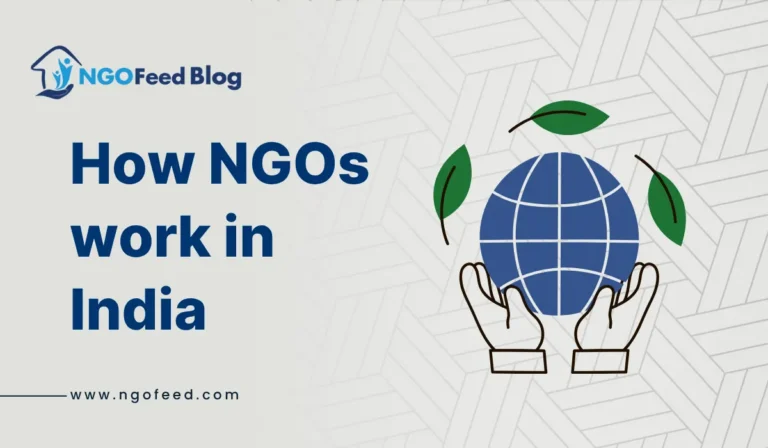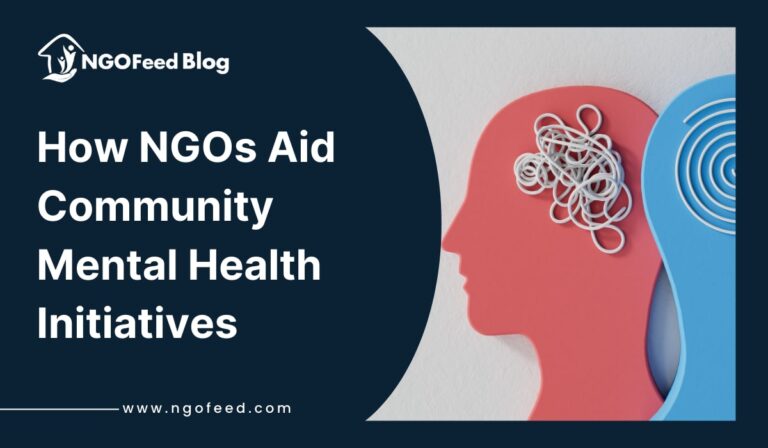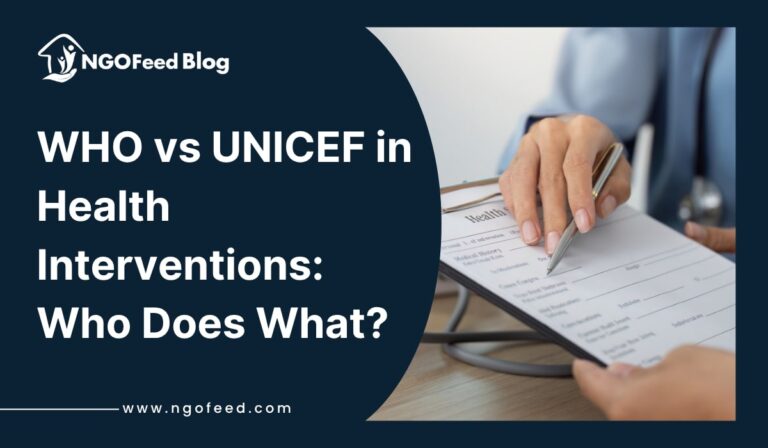Role of NGOs in Crisis Communication and Public Awareness: During a crisis, such as a natural disaster, health emergency or humanitarian conflict, adequate communication is as important as the operation of relief itself. Correct information will save lives, panic and direct societies to safety and resilience. That is where Non-Governmental Organizations (NGOs) are very important. In addition to offering direct help and assistance, NGOs are reliable sources of information, which fill the gap between the authorities, media, and the population.
Crisis communication falls beyond the ability of NGOs to spread verified information about updates and safety recommendations, and to stop fake information that usually propagates during crises. They use networks on the grassroots, social media and community outreach networks to make sure that even the most vulnerable or remote populations are informed with reliable information. NGOs also contribute to the development of the desired public awareness campaigns, encouraging preparedness and responsible civic behaviour through cooperation with governments, local leaders and international organizations.
In addition, NGOs act as the champions of open-mindedness and compassion in communication. They make the crisis human and generate local and international response by increasing the voice of those affected and sharing real-time ground reports. Their capability to integrate emotional narration with the factual updates makes them more trustworthy and promotes solidarity during unpredictable periods.
Essentially, NGOs are not merely reactors; they are communicators, educators and connectors who turn anarchy into action. Their critical contribution to the communication of a crisis is to make people not just informed but also empowered to act, recover and build resilience.
Table of Contents
What Is Crisis Communication and Why Is It Important?
Crisis communication has been described as the act of providing relevant, accurate, and understandable information in the face of a crisis or disruptive events. Such events may involve natural calamities, epidemics, humanitarian disasters or civil conflicts. Crisis communication aims at informing the masses, providing directions and reassurance, and avoiding misinformation, panic, and confusion.
Crisis communication should be taken seriously because of the following reasons:
- Safety to the community: The absence of ambiguity in instructions will enable community members to react appropriately to emergencies and minimize injuries, loss of life, and property damage.
- Prevent Misinformation: The verified and updated information is accurate and replaces rumours and fake news that can aggravate the crisis.
- Keep Trust: Open communication by reputable sources builds trust in people to the authorities, the NGOs, and the relief agencies.
- Supports Coordinated Response: The communication process has the benefit of ensuring all parties are on the same page in terms of actions and message to the stakeholders, namely the government, NGOs and media.
Also Read: WHO Global Nutrition Targets 2025
In the case of NGOs, crisis communication is important to understand. They are usually the link between the authorities and the communities, decoding the technical advice into useful information and making sure that even marginalised or remote groups are informed. NGOs aid communities to be informed, make safe choices and recover more quickly in case of crisis by means of clarity, accuracy and timeliness.
Simply put, crisis communication is not only the ability to deliver information- it is a lifeline that strengthens communities, improves the effectiveness of responding to emergencies, and reduces the consequences of occurrences.
What Is the Role of NGOs in Crisis Communication?
Non-Governmental Organization (NGOs) have become critical in crisis communication as they serve as a dependable go-between agencies between the governments and the populations. They can provide timely and correct information, especially to vulnerable or inaccessible communities, since they have a good understanding of local contexts, networks, and needs.
The important functions of NGOs during Crisis Communication:
- Creditworthy News: NGOs consider communities to get true news regarding the crisis, safety, and resources.
- Disarming Misinformation: NGOs can keep the panic and confusion at bay by tracking rumours and fake information.
- Community Engagement: through local volunteers, grassroots networks and outreach programs, NGOs can disseminate awareness.
- Education and Preparedness: NGOs carry out workshops, campaigns and training to prepare communities in the event of an emergency.
- Response and Reporting: NGOs gather feedback at the ground level among the affected communities, which assists the authorities and other stakeholders in changing the communication plans and response actions.
Also Read: WHO Mental Health Action Plan to 2030 & Beyond
Why This Matters:
- NGOs would increase the scope and efficacy of crisis communication, especially in isolated or marginalized societies.
- They contribute to establishing trust between the communities and authorities, so that messages are received, understood, and taken into action.
- NGOs close loopholes in responding to emergencies through networks, thereby opening up communication to be more participatory, practical, and centred on people.
Essentially, NGOs act as messengers and facilitators, which make sure that communities are informed, prepared and aided to act in times of crisis.
Why Is Public Awareness Important During a Crisis?
The public awareness in case of crisis is the process of making sure that the community is well educated on the nature of the crisis, precautions, resource availability and community steps that can be used to safeguard themselves. One of the most important factors of successful crisis management is awareness because it has a direct influence on the way people and society react to emergencies.
Significance of Educating the People:
- Increases Safety: Educated populations will be able to act based on instructions, displace safely, and implement preventive strategies that will minimize loss of life and property.
- Minimizes Panic and Confusion: Direct, coherent communication will avoid misinformation, rumour-mongering, as well as fear-based behaviour.
- Promotes Preparedness: Awareness activities inform individuals about the risks, emergency plans, and resources so that they can respond in advance.
- Empowers Communities: Knowledge provides people with confidence to make decisions, seek assistance and help others in times of crisis.
- Facilitates Good Coordination: NGOs, government, and other stakeholders organise their efforts, resulting in efficient relief efforts when communities know that help is available, regardless of their location.
NGOs in creating Awareness among the people:
- Organize workshops, training and community meetings.
- Target larger audiences using the media, social networks, and local networks.
- Focus on vulnerable populations to make sure that none of them remain uninformed and unready.
To conclude, social awareness extends beyond the dissemination of information, and the required action is to empower society with the knowledge and resources to act in response, remain safe, and recover more quickly than usual during a crisis. The establishment and
The sustainability of this awareness is enabled by NGOs that make sure that information cuts across all corners of the populations being affected.
Why Collaboration Matters: NGOs, Governments, and Media
Communication in crisis and publicity cannot be effective when an individual organization is reliant. The NGOs, governments and media outlets must be collaborating in ensuring that information that is timely, accurate and disseminated as widely as possible in the event of an emergency. The stakeholders have their own strengths, which, when pooled together, will strengthen the response of the whole and reduce crisis effects.
Also Read: Role of WHO in Healthcare
Major Reasons why Collaboration is important:
- Expanded Reach: NGOs are usually affiliated with a grassroots system, whereas media opportunities can deliver information to millions of people. Collaboration means that messages will be delivered to both urban and rural populations.
- Coherence and Precision: Coherence in communication is important in ensuring that there is no incompatible message, less confusion, and that people have confidence.
- Resource Optimization: The sharing of resources, expertise, and networks will make the awareness campaigns and emergency responses efficient and effective.
- Targeted Support: Cooperation gives stakeholders an opportunity to discover the vulnerable groups and design messages to address each of them.
- Improved Accountability: Collaboration fosters transparency, inclusion of feedback on communities and reinforcement of trust towards the institutions of the state.
Contribution of NGOs in Networking Activities:
- Act as mediators between the governments and the community.
- Enhance government propaganda and explain policies to understand them.
- Make communication relatable and doable through the ground insights and human stories provided to the media.
Essentially, this cooperation results in a combined and efficient crisis communication system, where communities will be able to obtain adequate, correct, and practical information on time. Through collaboration, the NGOs, governments, and media can save lives in case of emergencies and also develop long-term resilience and informed and empowered communities.
Also Read: The Role of UNICEF in Menstrual Health and Hygiene
Frequently Asked Questions (FAQs)
1. What does crisis communication mean, and why do we need it?
Crisis communication refers to the act of providing the right information, at the right time, and in the right manner when an emergency occurs. It assists communities to remain secure, deters misinformation and coordinates responses.
2. What is the role played by NGOs in crisis communication?
NGOs spread confirmed information, dispel fake news, mobilize societies, and receive feedback to enhance emergency response plans.
3. Why is community education important in case of a crisis?
Public awareness also makes sure that individuals know ways to react safely, lessens panic, inspires preparedness and allows communities to make knowledgeable choices.
4. What is the cooperation of NGOs with governments and media?
NGOs collaborate with governments to make the policy clear, collaborate with media to communicate with a broader group of people, and offer ground work experience in the policy to ensure that their communication is precise and effective.











I require funds